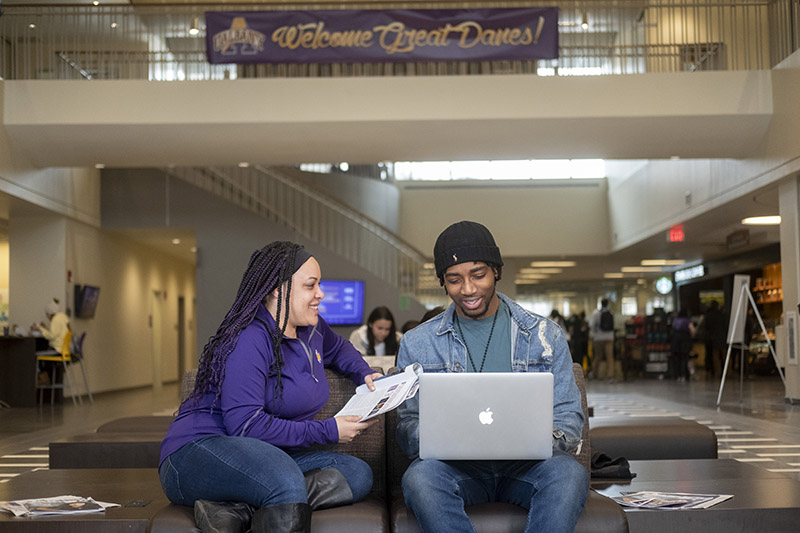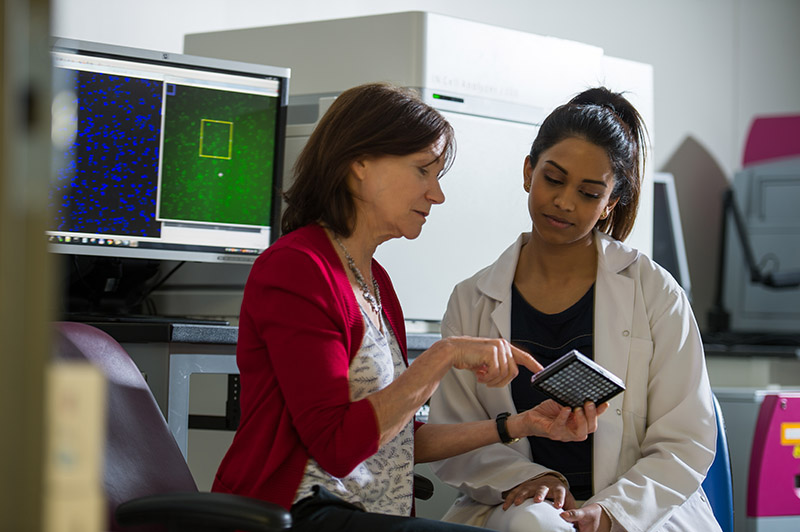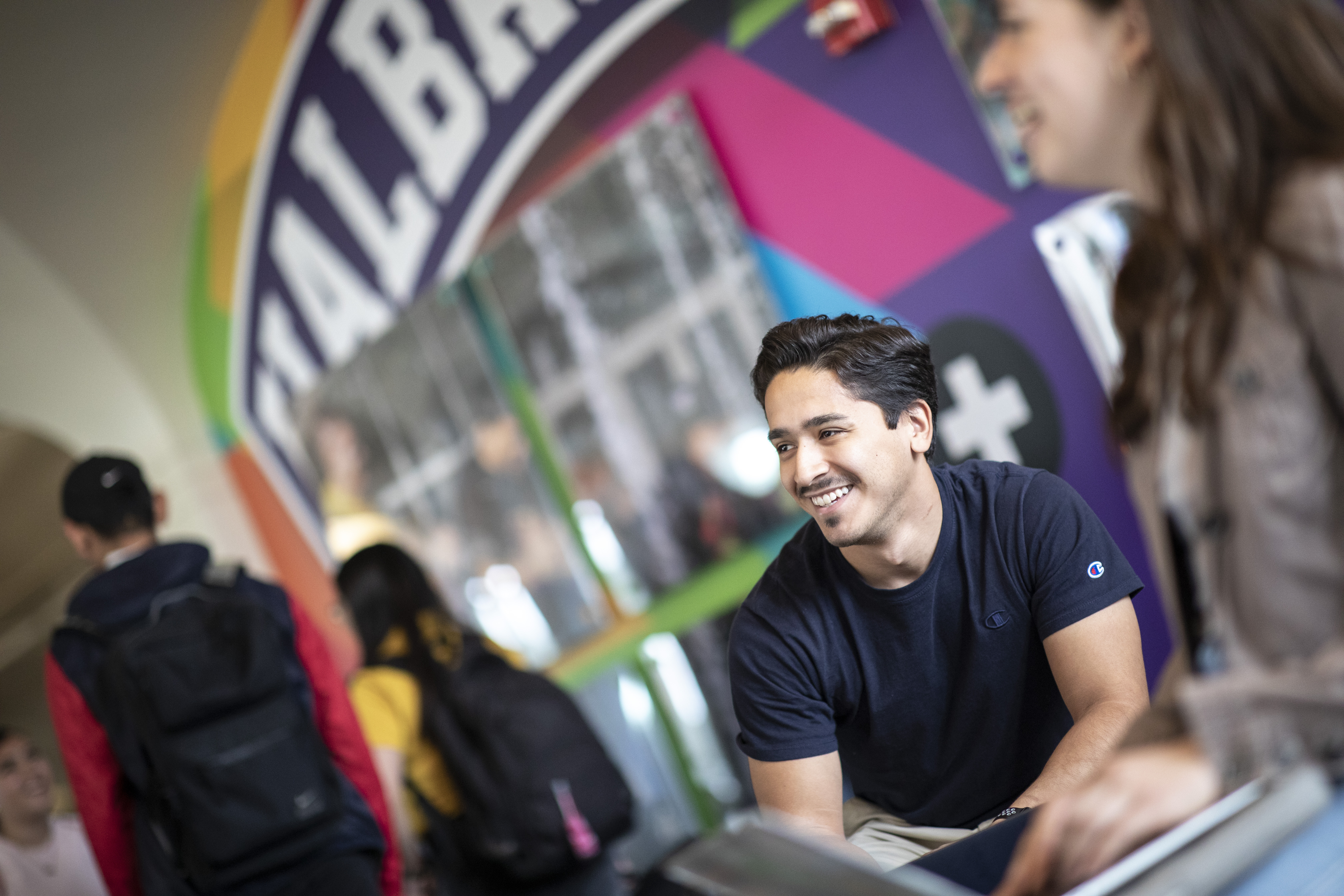Design, Implement and Grade Group Projects to Ensure Student Learning
Instructors might choose to assign group projects to give students experience with managing group dynamics like those they will encounter in the workplace or to help them develop the “soft skills” that collaboration requires.
Group projects can present important learning opportunities, but if they aren’t carefully designed and managed, they will lead to frustration for both instructors and students. And without effective structures in place to guide students’ efforts, instructors will find themselves expending much more time and energy responding to group conflicts (and sub-par work!).
Below are some key principles for designing, implementing, and grading group projects, along with some examples of how you might put those principles into action.
Principles to Guide Decisions about Group Project Design and Implementation
- Students need to understand why they are working in groups and what they should expect to learn from the experience.
- Students need support to help them manage their work, and that of their peers, when they are working on large projects.
- Group projects should require students to do meaningful, challenging disciplinary work together.
- Even when they are working with others, individual students’ grades should depend upon and reflect their individual work.
Putting Principles into Action
Start with a clear pedagogical goal for why you want students to work in groups. The decision to assign a group project begins with two fundamental questions.
First, how does the project you plan to assign relate to the goals of your course? And second, what do you want students to learn from working together that will go beyond what they could learn by working alone?
It should be clear from the outset that students will need the contributions of their peers in order to complete the project successfully.
This means that projects should require students to use higher-order thinking skills, not simply to discuss or present content. There needs to be room for (and the necessity of) bringing multiple perspectives and ways of thinking to bear on the work that the groups will do.
Thus the first step to group project design is determining whether having students work in groups is really the most appropriate way for them to meet the learning goals for the assignment. Once you have made this decision, you’re ready to begin thinking about design.
Create structure (and frequent opportunities for feedback) to guide students’ individual and group work. A significant challenge for students working in groups is self-regulation: undergraduates in particular may struggle to manage their work and that of their peers so they can stay on track with long-term projects.
If you are going to ask students to collaborate on a complex project, they will need support and feedback from you to build these self-regulatory skills. This means providing guidance through the cognitive work of the project itself AND structure to guide the process of their group’s work.
The following are some strategies to consider:
- Create intermediate deadlines for pieces of the larger project so that groups and individual students can receive feedback on their progress and process. This helps you ensure that individuals are contributing to their teams’ work and that groups are on the right track with their work.
- Give groups time to do their work in class (with the understanding that they will continue with individual work on their own outside of class). You might use class time for groups to share their individual work and make decisions about its relevance to the larger project, to ask you any questions they have about their progress, and make concrete plans for their next steps.
This should happen regularly during the time that students are working on projects, not just once as a “getting started” meeting. In fact, the idea is for some class time to be devoted to regular group meetings so that students’ time outside of class is focused on their individual work.
When group work happens in class, you can ensure that there is a clear structure and purpose for those interactions, in addition to directly observing groups’ work and providing feedback. This also allows you to avoid the frustration and difficulty students face when trying to coordinate group meetings outside of class.
- Give structured opportunities and guidance to students to ensure they provide meaningful feedback on each group member’s contributions. When students don’t have a structure to help them, they will struggle to communicate with their group members if any concerns arise. For this reason, it is important to develop and use a clearly articulated process to guide their feedback to each other.
Begin by determining, in collaboration with students, the criteria for effective group member behaviors. Make sure to put these criteria in writing in a document that students will use when they are asked to assess their group members’ contributions. Having students evaluate each other’s work at the end of the project for a grade helps them see the importance of their individual work.
Most importantly, having students give each other (ungraded) formative feedback on their work together at multiple points of the process provides opportunities for them to reflect on their behaviors and contributions and to potentially change their approach to working with their group.
- Give students structured opportunities to reflect on and assess their own contributions to their group’s work. Students will not think critically about their own contributions unless they are prompted to consider how they are contributing to their group’s success.
This reflection could be based on the same criteria that students use to assess the performance of their group members. Part of this reflection should include planning questions like “What is something I should do differently in the next stage of my group’s work to be a better contributor?”
Foster positive interdependence by creating meaningful tasks.
Groups tend to work most effectively when they are solving a problem, answering a genuine disciplinary question (i.e., one that doesn’t have a single “right” answer), or using disciplinary concepts to make and justify a meaningful decision.
This means that a project should require more than simply having students engage with content: they need to be doing the kind of challenging, authentic disciplinary work that requires them to listen to and engage with multiple perspectives.
If it is possible for a project to be completed by one or two students, it isn’t appropriately challenging for a group. Students need to see that they have something to contribute to their group’s work, and they have to see that their group members have meaningful contributions to make as well.
The role of individual work is crucial here: if students don’t feel accountable for working on their own as part of their preparation to work with their group, it is easy for students to “check out” of the process while one or two dominant students take over and do all of the work.
Build in multiple points of individual accountability, and make individual work the focus of formal evaluation (grading). There are several reasons to focus grades on individual students’ work and contribution to a project rather than on the quality of the group’s product alone.
First and most importantly, we want to ensure that the grades individual students receive in our courses are an accurate reflection of what those students are able to do.
A single group grade for a project can obscure the assessment of individual students’ learning. Second, students (justifiably) become frustrated when their grade on a project relies on the effort of others, especially when they don’t feel like they are in control of the quality or quantity of work that others do.
Finally, when individual students aren’t accountable for their contributions or performance, we can unintentionally cultivate behaviors like social loafing or free-riding - and ultimately impede their learning.
There are many types of individual work that students can do alongside and as part of their group’s work that can give instructors a valid assessment of their learning.
For example, individual students should focus their energy on completing individual research steps, drafts, annotations, revisions, or solutions. While this individually completed work can be workshopped and integrated by the group into the larger paper or project, it should be the focus of students’ work and the focus of your evaluation.
What does this mean for a grading scheme? While the grading scheme for any given project should be based on the goals of the project itself and the kind of learning you want students to do, keeping the focus on individual accountability means making sure that individual contributions to a group’s work make up the majority of the project grade.
Refocusing evaluation on individual work builds a sense of responsibility, changing the way students think about how they need to work with their peers.
There are concrete examples below to help you envision how you might evaluate students’ individual work alongside their group’s work.
Elements of Effective Group Project Assignments
Preparatory assignments that students can complete (individually and in groups) while they are working on group projects
- Individuals submit an annotated bibliography to you and their group members, listing all the sources they recommend for their group to use on a research-focused project. In their groups, they decide which resources are likely to be most useful moving forward and share those decisions with you as well, along with a plan for how they will use those sources as they begin drafting their final project.
- Groups submit regular progress reports, including reports of the work the group has completed to date, the work each individual group member has completed, and their next steps. You give them feedback to help them assess their progress to date and plan accordingly.
- Individuals submit early drafts of their contributions to the group’s work for feedback from you and their peers. They then make a written plan for how they will use that feedback to guide their next attempts.
Individual assignments (completed parallel to group project work) that allow for valid assessment of student learning
- Individual students write an analysis of the key disciplinary principles that the group used to complete the work of their project.
- Individual students write reports in which they evaluate their group’s project. This might include having them decide what they would do differently if they were asked to complete the same task again.
- Individual students submit a short paper in which they describe their own ideas for solving the problem which the group project responded to. They may agree or disagree with the choices their group made.
A group project grading scheme that focuses on individual assessment
- 70% individual work, including preparatory and final assignments
- 15% final group product
- 10% group progress reports/intermediate stages of work
- 5% student evaluation/assessment of contributions (their own and those of their group members)
Resources
- Bacon, D. R. (2005). The effect of group projects on content-related learning. Journal of Management Education 29(2), 248-267.
- Burke, A. (2011). Group work: How to use groups effectively. The Journal of Effective Teaching 11(2), 87-95.
- Millis, B. (2014). Using cooperative structures to promote deep learning. Journal on Excellence in College Teaching 25(3&4), 139-148.





